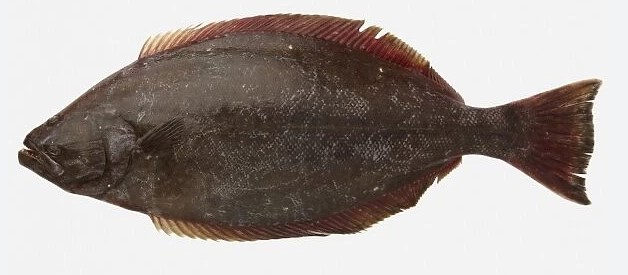
The appearance of Pacific halibut (Ohyô)
Common name: Pacific halibut, Alaska halibut, Halibut
Japanese name: Ohyô (大鮃、大兵)
Chinese common name: 狭鳞庸鲽 (太平洋庸鲽)
Korean common name: 태평양가자미/마설가자미
French common name: Flétan du Pacifique
German common name: Pazifischer Heilbutt
Italian common name: Halibut del Pacifico
Spanish common name: Alabato del Pacífico, Halibut del Pacifico, Fletán del Pacífico, Alabato del Pacifico
Portuguese common name: Alabote-do-Pacifico
Russian common name: Палтус белокорый тихоокеанский, Тихоокеанский белокорый палтус
Scientific name: Hippoglossus stenolepis Schmidt, 1904
Nigiri sushi detail: Pacific halibut (Ohyô) Nigiri sushi
Characteristics:
Pacific halibut (Ohyô) is distributed in the north of the Tohoku region on the Pacific side, the northern Sea of Japan, the Sea of Okhotsk, and the North Pacific Ocean. It inhabits sandy and muddy bottoms from shallow coastal waters to a depth of 2,000 m. It is the largest species of flounder, usually around 1 meter in length. Maximum length is 2m. The body color on the eye side is dark brownish-blue with scattered white spots.
Its flesh is rich in vitamin A, and its liver is used to make liver oil. Until the early Taisho period (1912-1926), it was caught in large quantities in Hokkaido, but overfishing has led to a sharp decline in catches, and American and other frozen Atlantic species appear on the Japanese market under the name Ohyô.
Ohyô has a lighter, lighter flavor than Bastard halibut (Hirame) or Round-nose flounder (Musigarei), making it a good choice for oil-based dishes such as steaks, meuniere, and fried fish. Fresh Ohyô can be served as a substitute for Bastard halibut (Hirame) at sushi restaurants and is surprisingly inexpensive.
Share this article